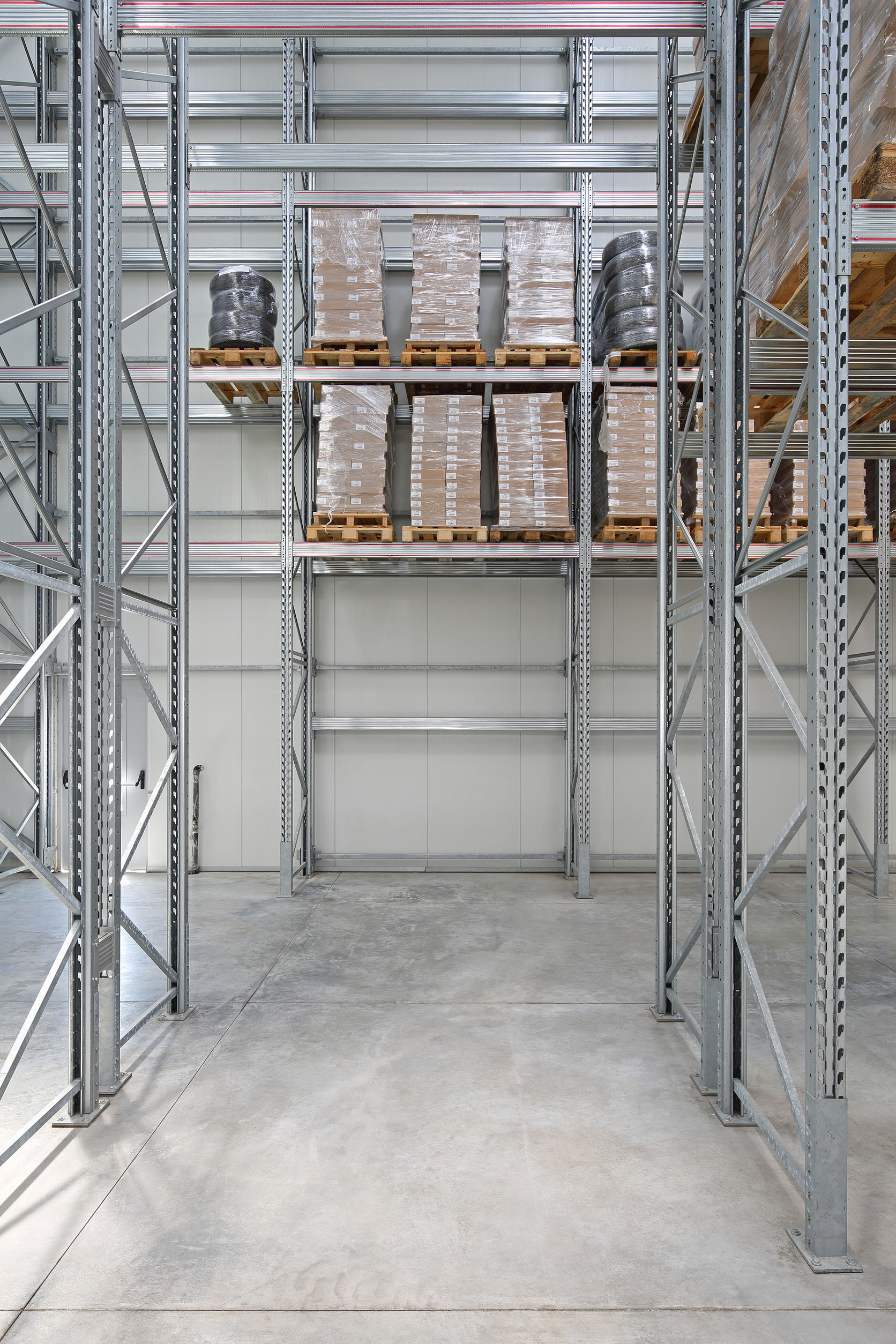Difference in Manufacturing
Roll form racking is manufactured by roll forming flat steel stock into a desired shape, commonly an open “C” shape for the uprights and a closed tube with a step for the beams. Typically, “tear drop” holes are punched into the face of the upright to allow for the installation of beams without the need for any additional hardware.
Structural frames and beams are manufactured from hot-rolled structural “C” channels. Holes are punched into the face of the upright and the beams are bolted to the uprights. Due to the difference in raw material, structural racking is a more heavy duty alternative to roll form racking.
Difference in Functionality
Structural and roll form racking can be used very similarly for most applications. For selective, drive-in, push back, pallet flow or even pick modules, either type of rack serves much the same purpose.
The main functional difference between structural and roll form rack is their resistance to forklift and other abuse within the warehouse. Although both are no match 
Structural racking inherently has a greater load bearing capacity and rigidity due to its raw materials; however, the capacity of roll form racking can be increased by using thicker gauge steel and column reinforcements. Pallet rack is always designed for a particular loading configuration and, in most typical warehouse applications, either structural or roll form rack can be designed to provide adequate storage capacity. However, in certain cases where very heavy loads are being stored, structural racking may be required over roll form racking.
Structural racking is also popular for food storage applications since the open column design allows for easier wash-down and makes it harder for food to get stuck in the column.
Difference in Cost
Since every foot of structural column or beam contains more steel than its roll formed counterpart, you can expect to pay more for it. Additionally, since each structural beams need to be bolted to the upright, installation costs are also usually higher. However, the higher initial investment for structural racking is often offset by savings over time from fewer repairs and overall lifespan of the racking.
Roll formed rack is a popular choice in many warehouses and can fulfill your storage needs for decades in the right environment. However, if durability or resistance to forklift damage is a concern for you, structural pallet rack is worth your consideration.
Pallet rack systems are common and important part of many warehouse operations. If you need help determining whether structural or roll form racking is right for your application, please contact us or learn more about pallet rack systems here.

